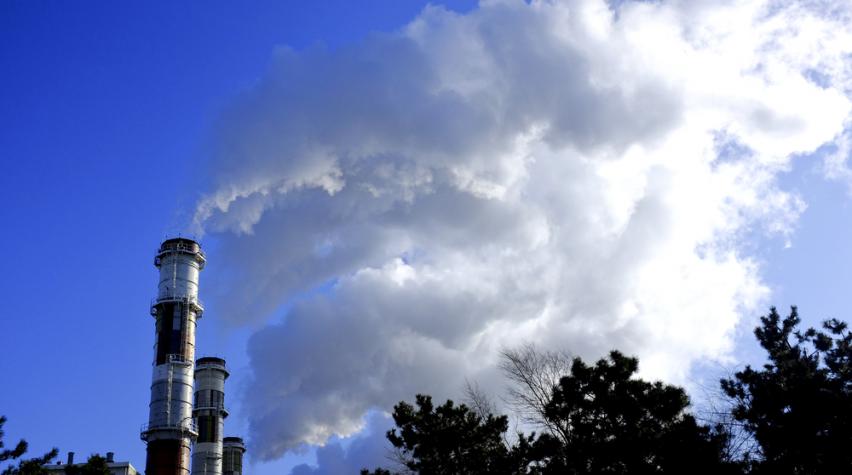
With a goal of limiting global temperature rise to 2°C above preindustrial levels, representatives from 195 countries met in Paris last year for the United Nations Framework Convention on Climate Change (UNFCC). The participants negotiated the Paris Agreement, in which each country promises to reduce carbon emissions based on its own carbon-reduction plan. The agreement will go into effect in April 2016 if at least 55 countries that produce over 55% of the world’s greenhouse gas (GHG) emissions sign the agreement. Each country will resubmit its carbon-reduction plan every five years with modifications/improvements.
Although the targets are not binding, it is apparent that each represented country believes that carbon emissions must be slowed. Many strategies and technologies have been discussed to solve this issue, such as cap and trade (limiting a company’s emissions based on permits that can be bought and sold), carbon taxing (imposing a tax on, for example, energy products and/or motor vehicles based on the carbon content of the fuel), and switching to alternative forms of energy (e.g., solar, wind, nuclear).
Critical factor in limiting global warming
One important method stands out — carbon capture, utilization, and storage (CCUS). The United Nations Inter-governmental Panel on Climate Change (IPCC) has concluded that CCUS, in some combination with other technologies, will likely be necessary to limit global warming to the targeted 2°C. Although CCUS gets less attention in the media than some of the other strategies, it is an area where chemical engineers can have a significant impact.
So what is CCUS? Carbon capture, utilization, and storage encompasses methods and technologies to remove CO2 from fluegas and from the atmosphere coupled with recycling of the CO2 for use in practical applications and/or safe and permanent storage. Several CCUS projects are already underway, including NRG Energy’s Petra Nova, a commercial-scale post-combustion carbon capture project, and Denbury Resources’s Hastings Oil Field, which employs CO2 for enhanced oil recovery (EOR). You can also read more about CCUS in the August 2011 CEP energy supplement on carbon capture and storage and the January 2016 AIChE Journal Perspective article, “Towards Trans-formational Carbon Capture.”
Working towards a solution
AIChE’s Center for Energy Initiatives (CEI) is engaged in multiple CCUS-related projects. With support from the National Science Foundation (NSF), CEI has partnered with Columbia Univ. to form the research coordination network (RCN) on carbon capture, utilization, and storage (CCUS). The aim of the RCN-CCUS is to coordinate interdisciplinary research, training, and educational activities.
Among the events organized by the RCN-CCUS was the Fifth International Conference on Accelerated Carbonation for Environmental and Material Engineering (ACEME). The conference’s goal was to promote research and development on accelerated carbonation in the context of CCUS at an international level. The conference stood out as being highly international, emphasizing that CCUS is a global subject. With five major themes — including CO2 capture and storage by mineral carbonation, and utilization of the carbonated materials — attendees shared knowledge and discussed development and implementation of the latest advances in the field of theoretical and applied research on accelerated carbonation. For more information on ACEME and the RCN-CCUS, visit www.aiche.org/ccusnetwork.
CEI has also partnered with five other major engineering societies to create the Founder Societies: Technologies for Carbon Management (FSCM). With the belief that it is the responsibility of engineers and engineering professionals to respond to the global challenge of addressing worldwide GHG emissions, the societies have joined to develop and implement technologies for carbon management.
The FSCM also hosted major events to further the field of CCUS, including the 2015 Carbon Management Technology Conference (CMTC 2015) last November in Sugar Land, TX. The conference highlighted CCUS technologies that provide options for lowering GHG emissions while maintaining fuel diversity for sustainable growth. CMTC 2015 was unique in its focus on industry and sustainable/economical CCUS options that are already being performed at large scale, and included site visits to the NRG and Denbury CCUS projects mentioned earlier. Speakers at CMTC 2015 included Julio Friedmann of the U.S. Dept. of Energy Office of Fossil Energy, and Charles McConnell of Rice Univ., who both emphasized the importance of implementing CCUS technologies. Other speakers and poster presentations covered such topics as CO2 capture for fossil energy power plants, CCUS transportation infrastructure, CCUS policy/legislation/regulations for furthering R&D and deployment, and more. To see interviews and presentations from the conference, or for more about CMTC or FSCM, visit www.fscarbonmanagement.org. The next CMTC is being planned for early 2017.
CCUS represents an important technology option for addressing the reduction of carbon emissions. AIChE’s Center for Energy Initiatives is helping to advance this field. To learn more or get involved, visit www.aiche.org/cei or e-mail energy@aiche.org.
This article originally appeared in the February 2016 issue of CEP Magazine.

